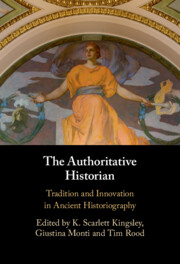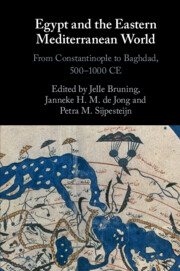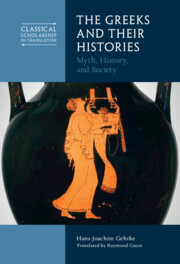Refine search
Actions for selected content:
23990 results in Ancient history
Introduction
-
- Book:
- Music, Politics and Society in Ancient Rome
- Published online:
- 24 November 2022
- Print publication:
- 08 December 2022, pp 1-41
-
- Chapter
- Export citation
Chapter 9 - Galen’s Anatomical Procedures and Its Innovations
- from Part II - Text
-
- Book:
- Dissection in Classical Antiquity
- Published online:
- 18 November 2022
- Print publication:
- 08 December 2022, pp 316-348
-
- Chapter
- Export citation
Abbreviations
-
- Book:
- Music, Politics and Society in Ancient Rome
- Published online:
- 24 November 2022
- Print publication:
- 08 December 2022, pp xii-xiv
-
- Chapter
- Export citation
Maps
-
- Book:
- Caesar Rules
- Published online:
- 23 November 2022
- Print publication:
- 08 December 2022, pp xi-xi
-
- Chapter
- Export citation
Chapter 7 - Anatomical Texts of the Roman Period
- from Part II - Text
-
- Book:
- Dissection in Classical Antiquity
- Published online:
- 18 November 2022
- Print publication:
- 08 December 2022, pp 216-273
-
- Chapter
- Export citation
1 - Portraying the Roman Emperor
-
- Book:
- Caesar Rules
- Published online:
- 23 November 2022
- Print publication:
- 08 December 2022, pp 23-105
-
- Chapter
- Export citation
Abbreviations
-
- Book:
- Caesar Rules
- Published online:
- 23 November 2022
- Print publication:
- 08 December 2022, pp xxi-xxiv
-
- Chapter
- Export citation
1 - The Games of L. Anicius Gallus and the Cultural Politics of Music in the Second Century BCE
-
- Book:
- Music, Politics and Society in Ancient Rome
- Published online:
- 24 November 2022
- Print publication:
- 08 December 2022, pp 42-82
-
- Chapter
- Export citation
Chapter 2 - Innocence and Intent
- from Part I - The Practice of Voluntas
-
- Book:
- Cicero and the People’s Will
- Published online:
- 24 November 2022
- Print publication:
- 08 December 2022, pp 32-56
-
- Chapter
- Export citation
Figures
-
- Book:
- Music, Politics and Society in Ancient Rome
- Published online:
- 24 November 2022
- Print publication:
- 08 December 2022, pp vii-ix
-
- Chapter
- Export citation
Figures
-
- Book:
- Caesar Rules
- Published online:
- 23 November 2022
- Print publication:
- 08 December 2022, pp ix-x
-
- Chapter
- Export citation
Graphs
-
- Book:
- Caesar Rules
- Published online:
- 23 November 2022
- Print publication:
- 08 December 2022, pp xii-xii
-
- Chapter
- Export citation
2 - Playing Imperial Roles
-
- Book:
- Caesar Rules
- Published online:
- 23 November 2022
- Print publication:
- 08 December 2022, pp 106-182
-
- Chapter
- Export citation

The Authoritative Historian
- Tradition and Innovation in Ancient Historiography
-
- Published online:
- 02 December 2022
- Print publication:
- 26 January 2023

Egypt and the Eastern Mediterranean World
- From Constantinople to Baghdad, 500-1000 CE
-
- Published online:
- 01 December 2022
- Print publication:
- 15 December 2022

The Greeks and Their Histories
- Myth, History, and Society
-
- Published online:
- 01 December 2022
- Print publication:
- 15 December 2022
Acknowledgments
-
- Book:
- Pindar and Greek Religion
- Published online:
- 18 November 2022
- Print publication:
- 01 December 2022, pp x-xii
-
- Chapter
- Export citation
Subject Index
-
- Book:
- Pindar and Greek Religion
- Published online:
- 18 November 2022
- Print publication:
- 01 December 2022, pp 270-274
-
- Chapter
- Export citation
Nine - Old Walls Razed, New Walls Built
-
- Book:
- The Lives of a Roman Neighborhood
- Published online:
- 22 November 2022
- Print publication:
- 01 December 2022, pp 193-206
-
- Chapter
- Export citation
Part I - Uncertainty
-
- Book:
- The Uncertain Past
- Published online:
- 18 November 2022
- Print publication:
- 01 December 2022, pp 51-194
-
- Chapter
- Export citation
